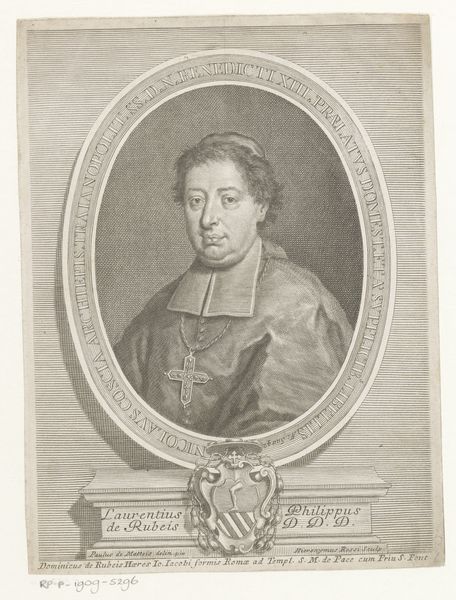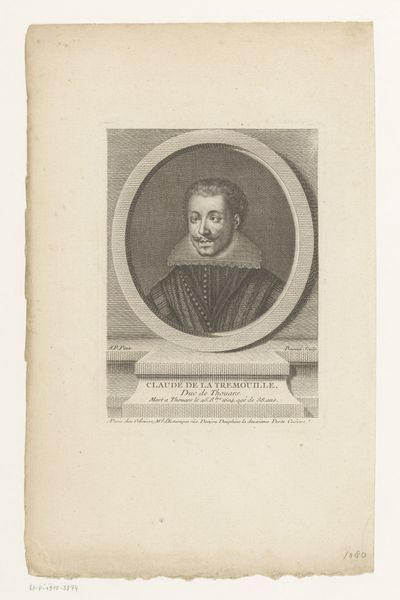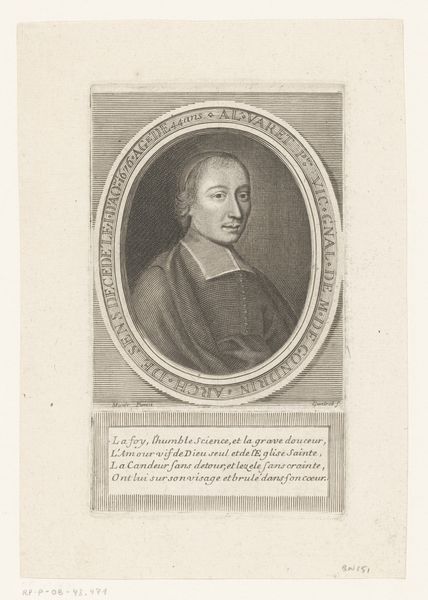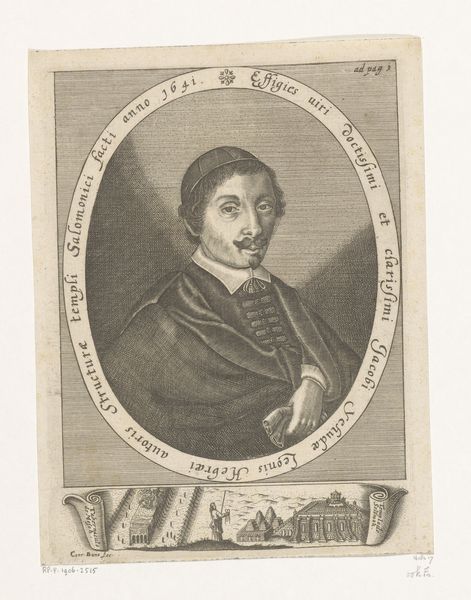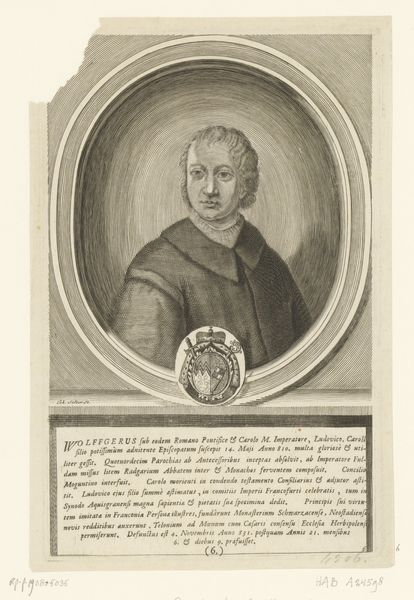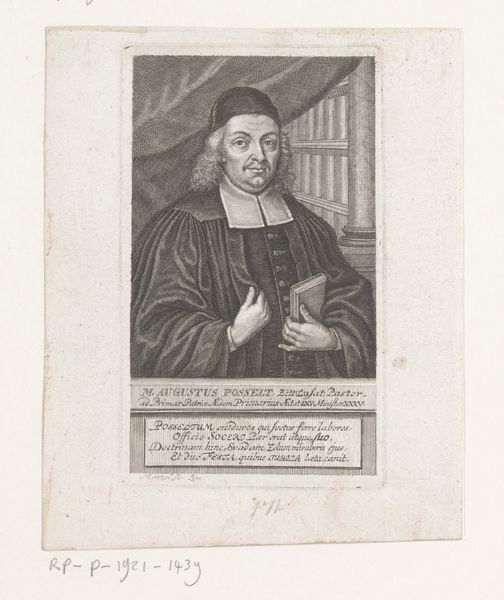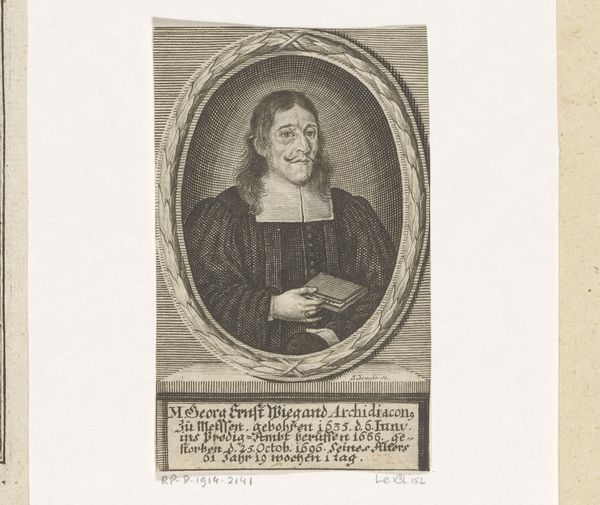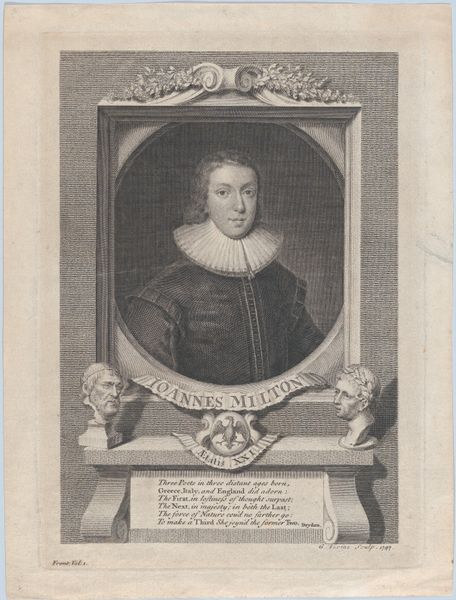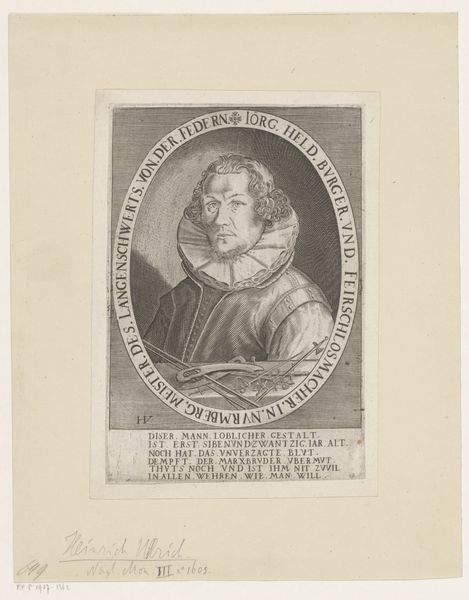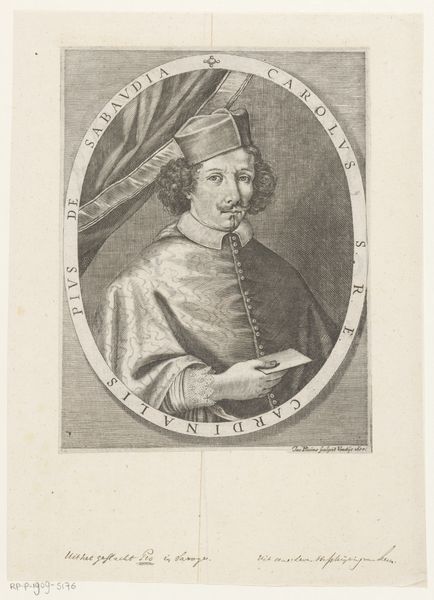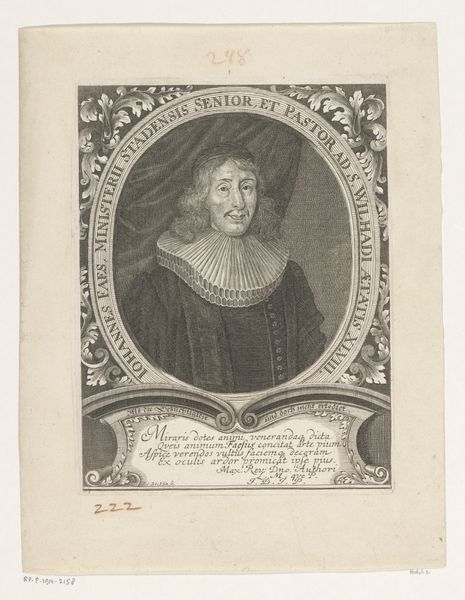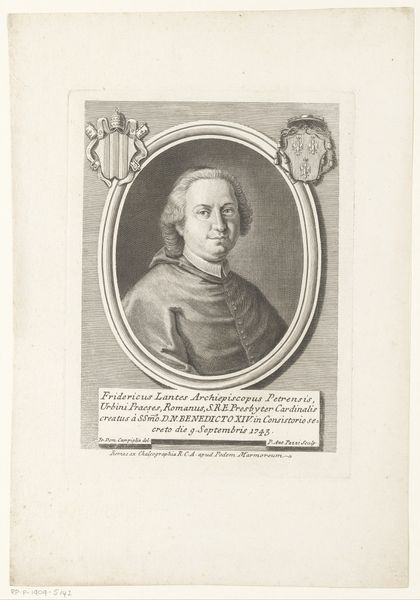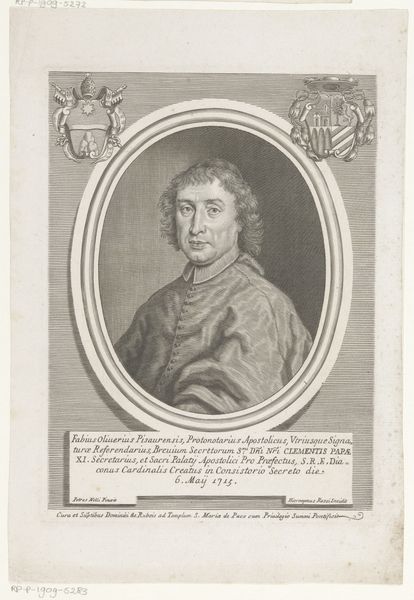
print, engraving
#
portrait
#
baroque
# print
#
old engraving style
#
figuration
#
line
#
history-painting
#
engraving
Dimensions: height 220 mm, width 165 mm
Copyright: Rijks Museum: Open Domain
This is Girolamo Rossi’s small portrait of Cardinal Niccolò Coscia, made using etching, sometime between 1697 and 1762. The eye is immediately drawn to the oval frame that entraps the cardinal. The composition's structure seems designed to elevate Coscia’s status. Note the heraldic shields flanking the oval, symbols of power that frame his likeness. The inscription below further anchors the Cardinal's identity within a hierarchy, each line a structural element reinforcing his titles and associations. Rossi masterfully uses the etching technique to render fine details, capturing the textures of Coscia's vestments. But consider the role of the frame: is it a boundary or a stage? The frame is a semiotic tool, underscoring the constructed nature of identity. It also serves to create layers of meaning, hinting at the complex interplay between image and reality. The etching’s formal qualities, in their construction, transcend mere likeness. The artist uses line and form to explore the construction of power, suggesting that identity is not fixed but is itself an etching: carefully inscribed, framed, and open to interpretation.
Comments
No comments
Be the first to comment and join the conversation on the ultimate creative platform.
